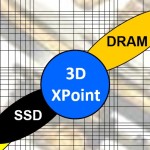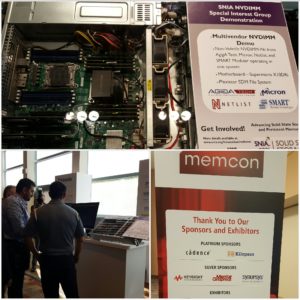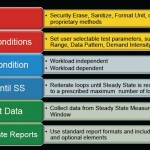 I’ll be speaking at SNIA’s SDC Pre-Conference this Sunday, Sept 20, about the new Intel-Micron 3D XPoint memory. I was surprised to find that my talk won’t be unique. There are about 15 papers at this conference that will be discussing NVM, or persistent memory.
I’ll be speaking at SNIA’s SDC Pre-Conference this Sunday, Sept 20, about the new Intel-Micron 3D XPoint memory. I was surprised to find that my talk won’t be unique. There are about 15 papers at this conference that will be discussing NVM, or persistent memory.
What’s all this fuss about?
Part of it has to do with the introduction by Micron & Intel of their 3D XPoint (pronounced “Crosspoint”) memory. This new product will bring nonvolatility, or persistence, to main memory, and that’s big!
Intel itself will present a total of seven papers to tell us all how they envision this technology being used in computing applications. Seven other companies, in addition to Objective Analysis (my company) will also discuss this hot new topic.
SNIA is really on top of this new trend. This organization has been developing standards for nonvolatile memory for the past couple of years, and has published an NVM Programming Model to help software developers produce code that will communicate with nonvolatile memory no matter who supplies it. Prior to SNIA’s intervention the market was wildly inconsistent, and all suppliers’ NVDIMMs differed slightly from one another, with no promise that this would become any better once new memory technologies started to make their way onto memory modules.
Now that Intel and Micron will be producing their 3D XPoint memory, and will be supplying it on industry-standard DDR4 DIMMs, it’s good to know that there will be a standard protocol to communicate with it. This will facilitate the development of standard software to harness all that nonvolatile memory has to offer.
As for me, I will be sharing information from my company’s new report on the Micron-Intel 3D XPoint memory. This is new, and it’s exciting. Will it succeed? I’ll discuss that with you there.


